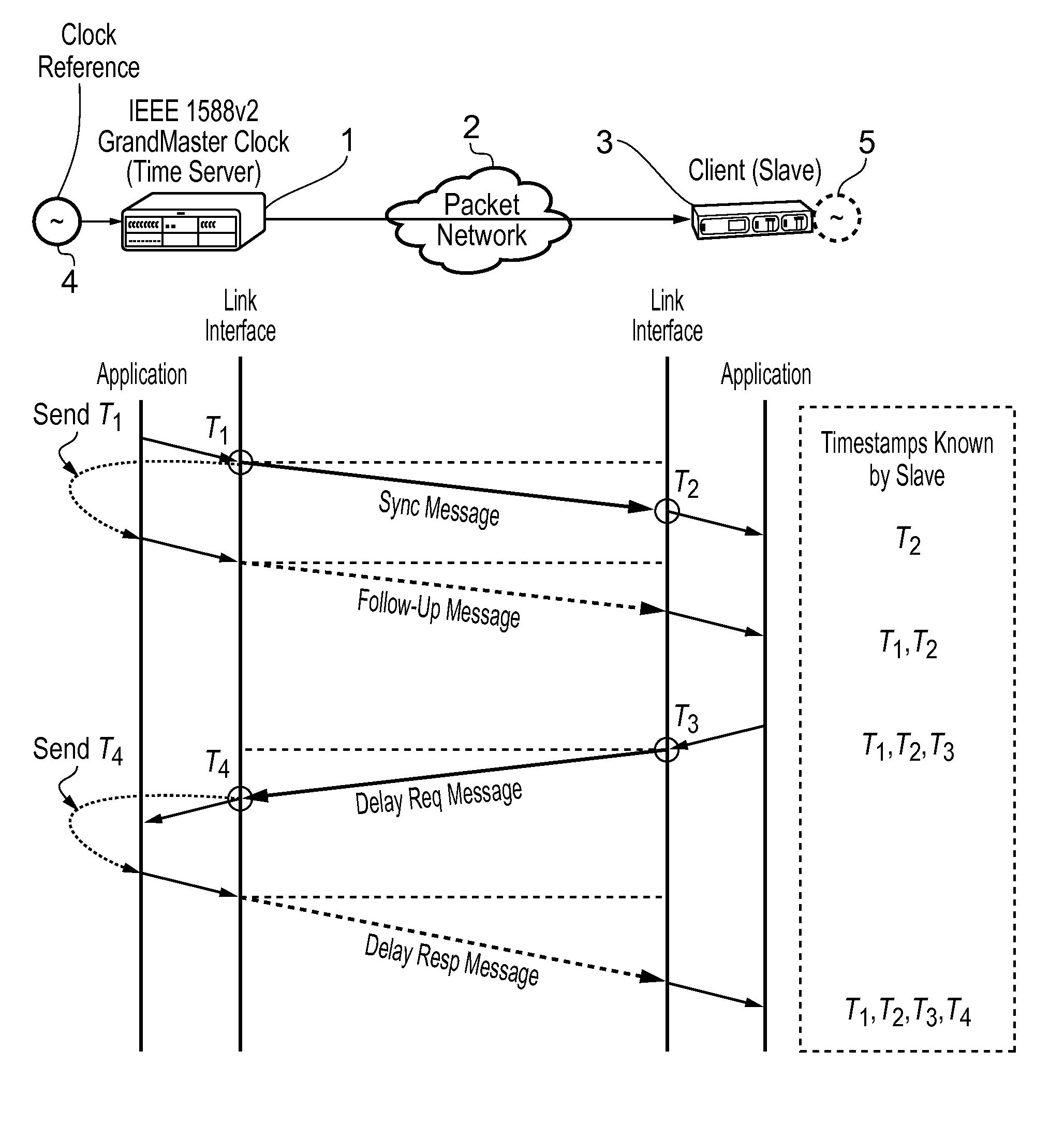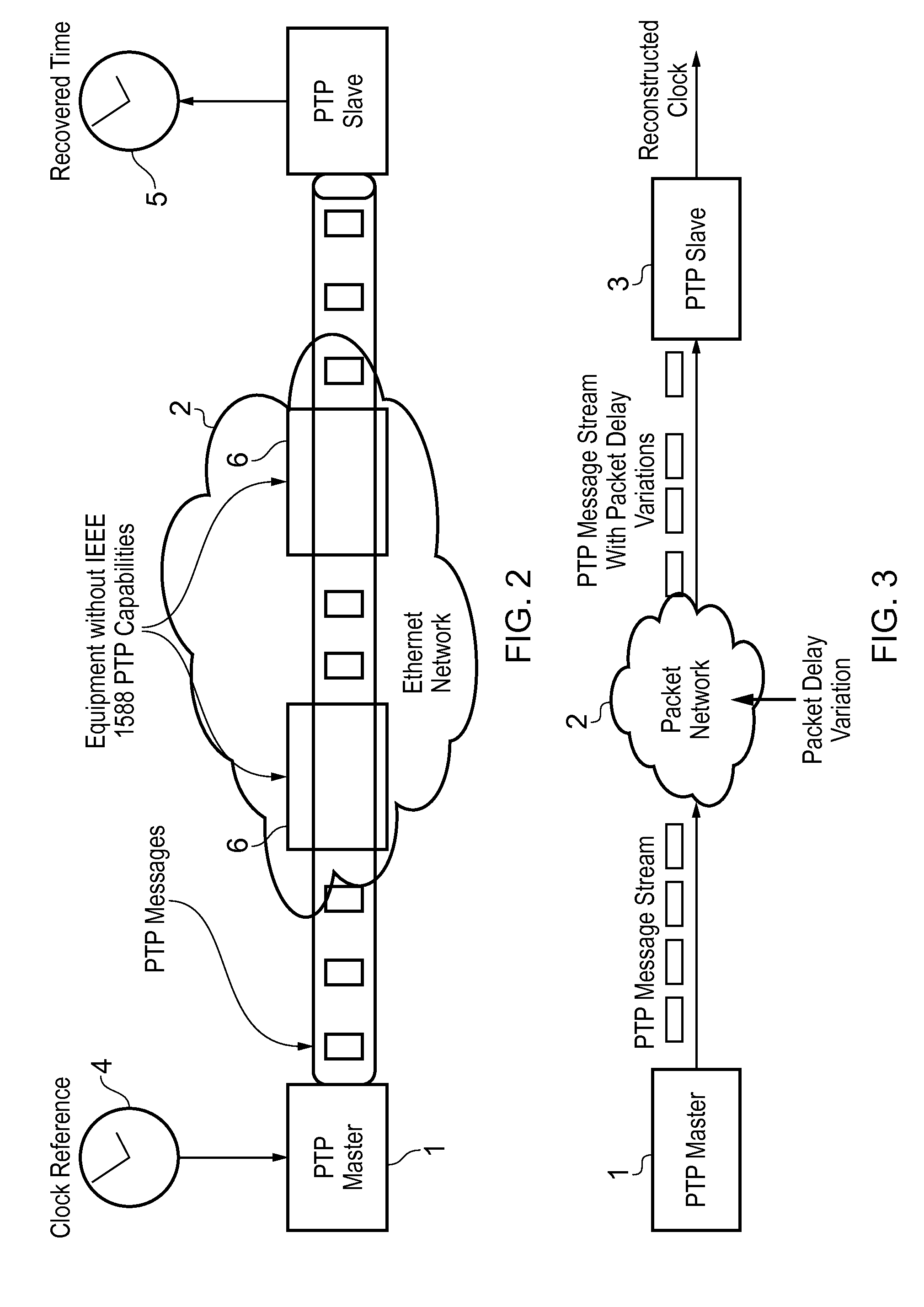Method and devices for time and frequency synchronization using a phase locked loop
a phase lock and time and frequency synchronization technology, applied in the direction of time-division multiplex, electrical equipment, pulse automatic control, etc., can solve the problems of more difficult time/frequency transfer, scope of telecom synchronization, and propagation of mostly wandering up to the receiver clock signal
- Summary
- Abstract
- Description
- Claims
- Application Information
AI Technical Summary
Benefits of technology
Problems solved by technology
Method used
Image
Examples
Embodiment Construction
[0036]At their broadest, slave devices of the present invention include a slave clock and a phase locked loop which is used to process an estimate of the time and frequency of a master clock to which the slave clock is desired to be synchronized.
[0037]A first aspect of the present invention provides a slave device connected to a master device having a master clock over a network, wherein the slave device includes: a slave clock; and a digital phase locked loop including a phase detector, a loop filter, a phase accumulator and a counter, wherein: the slave device is arranged to: exchange with the master device, timing messages and to record timestamps which are: the time of sending of said timing messages from the master device according to the master clock; the time of receipt of said timing messages according to the slave clock; the time of sending of said timing messages according to the slave clock; and the time of receipt of said timing messages according to the master clock, es...
PUM
 Login to View More
Login to View More Abstract
Description
Claims
Application Information
 Login to View More
Login to View More - R&D
- Intellectual Property
- Life Sciences
- Materials
- Tech Scout
- Unparalleled Data Quality
- Higher Quality Content
- 60% Fewer Hallucinations
Browse by: Latest US Patents, China's latest patents, Technical Efficacy Thesaurus, Application Domain, Technology Topic, Popular Technical Reports.
© 2025 PatSnap. All rights reserved.Legal|Privacy policy|Modern Slavery Act Transparency Statement|Sitemap|About US| Contact US: help@patsnap.com



